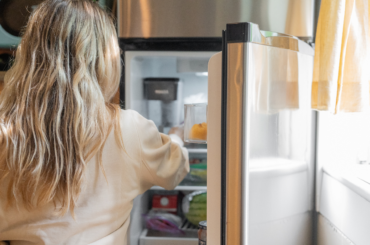When siblings fight, how involved do you need to be? Leaving kids to resolve their own fights doesn’t often lead to fair outcomes. But stepping in to dole out justice doesn’t help much either, because it may fuel more resentment and conflict, and even undermine their sibling relationship—plus kids won’t learn much from it.
Experts suggest that parents try to act as mediators to help kids learn how to resolve the problem. As Holly Recchia, Ph.D., a psychologist at Concordia University in Montreal, puts it, “Slow it down and help them hear each other, as opposed to deciding how it’s going to end.” This not only helps resolve conflicts in the moment, but gives kids constructive communication and compromise skills that will serve them well throughout their lives.
Here are the steps to follow to mediate a conflict between children:
1. Agree on the ground rules
Your first job is to set up a level field for the discussion. Be clear on the rules—no yelling, no interrupting, no grabbing the toy that they were fighting over, etc.—and make sure both kids agree to follow the rules so you can proceed.
2. Let each child talk
Give each child a chance to describe what happened from their perspective, and point out any differences or similarities between the two accounts. This will identify common ground, as well as areas where the kids might have seen things differently.
3. Discuss feelings and perspectives
Ask each kid to describe how they felt during the conflict, and to repeat how the other child felt: “Why did your sister feel so upset?” This helps build empathy between siblings that will help them have a positive relationship in the long term, in addition to helping them understand their sibling’s point of view in the current argument.
4. Help them come up with a solution
Have the kids brainstorm different ideas for resolving the conflict. Consider all ideas and help them think through how each one would work and which one is the most reasonable. Ultimately the siblings will be working together on creative problem-solving, which helps them bond.
While it might seem easier and faster to just step in as the parent and settle disagreements, mediation is far more beneficial to the children. “By engaging participants in hearing each other and creating their own solutions,” explains Elaine Shpungin Ph.D., director of the University of Illinois (Urbana-Champaign) Psychological Services Center, “you decrease both the sense of helplessness (we don’t know how to solve this)—and powerlessness (we don’t have choice in how things are gonna go)—which often result from having a third party (even a well-meaning one) be judge and jury to one’s conflict.”
This strategy does take some time and energy for the parent, especially in the beginning, but by using it regularly you’ll be setting up siblings for better mutual understanding, teaching important conflict resolution skills, and preventing future fights from getting out of hand. As one study showed, mediation appears to “empower the children to do the future-oriented planning that will enable them to resolve their differences.”
Within any family there will always be conflicts and hurt feelings from time to time, and that’s natural. But by sticking with this strategy over the years, you should eventually be able to foster a stronger sibling relationship where the kids “are on each other’s side and going to give each other the benefit of the doubt,” says Susan McHale, Ph.D., a professor of human development and family studies at Penn State University in State College, Pennsylvania.







